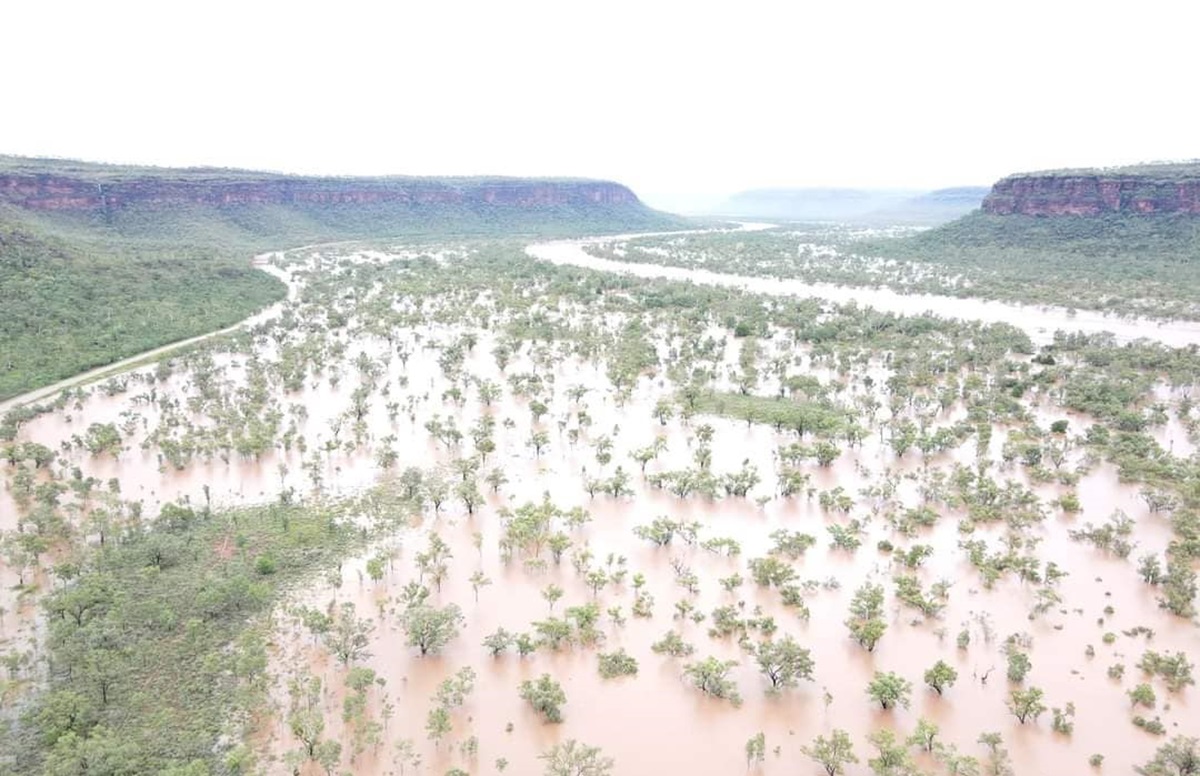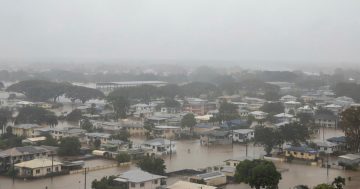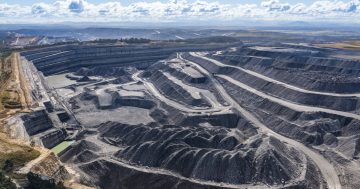
An increase in the number of natural disasters has led to global insurance losses of US$100bn (A$162bn) in each of the past five years. Photo: NT Chief Minister Facebook.
While supermarkets and energy providers have been targeted for the current cost-of-living crisis, one of the major influences has been the cost of housing, particularly rental accommodation. A corollary to the cost of housing has been the steep rise in home and contents insurance rates in recent years, far outpacing and often doubling the inflation rate.
This is not only linked to the rising costs of dwellings, but also the increased cost of building materials required to repair or replace a building, particularly since the pandemic and its resulting and ongoing global supply chain issues.
And if that’s not enough, the ongoing globalisation of insurance companies and underwriters means natural disasters caused by climate change, even if they occur on the other side of the world, are having a major effect.
A new report by The Australia Institute says the ongoing fire crisis in and around Los Angeles will add to the global climate insurance crisis.
It quotes global rating agencies such as Moody’s as saying global insured losses from natural disasters have averaged about US $100bn (A$162bn) over the past five years, and FitchRatings reporting that insured natural catastrophe costs were “47 per cent above the 20-year average” in the first half of 2023.
The report says the reinsurance market is the process through which insurance companies buy insurance from bigger, global companies to limit their own losses in the event of a major natural disaster, and this effects premiums on a global scale.
“People may not realise that events like California’s wildfires increase the likelihood of further increases in insurance premiums,” Senior Research Fellow David Richardson said.
“The increasing number, scale and intensity of natural disasters like bushfires, cyclones and floods – due to our changing climate – is a global phenomenon which will impact insurance premiums around the world, including here in Australia.
“It is the same global factors which increase the frequency and scale of events like the LA wildfires and also increase the frequency and severity of climate-related disasters in Australia,” he added.
“It’s difficult to put a dollar figure on it for Australian consumers but, as the world’s big reinsurers push up premiums to cover their losses from natural disasters, local insurance companies will be forced to do the same.
“The soaring cost of insurance has left many Australians unable to afford to insure their homes and belongings. If prices rise even further, more people will be forced out.”
For the climate change deniers, in a report on Channel 10’s The Project on 14 January, The Australia Institute’s Richard Denniss said: “It doesn’t matter whether people believe in climate change or not.
“What matters is insurance companies know that their payouts have gone through the roof, and the insurance companies are going to increase people’s premium. That’s just the way.”
The Australia Institute says the 2022 floods pushed insured losses to a record $7 billion, almost double previous records. It added that, since 2013, insured losses in each year have exceeded the combined losses of the five years from 2000 to 2004.
A March 2024 report from the Actuaries Institute said 15 per cent of all households faced home insurance affordability stress, meaning their insurance premiums cost more than four weeks of gross household income, a 30 per cent increase in the number of households over the previous year.
Professor of Strategic Management at University of Queensland Business School Paula Jarzabkowski told The Project that the global reinsurance market paid for large-scale disasters everywhere in the world.
“That’s called the reinsurance market, and its insurance for insurance companies,” she said. “So, normally the premiums of the many pay for the losses of the few, [but] when we’ve got the losses of the many, it’s that global market that pays.
“That market’s taken quite a beating year-on-year over the last few years, including from our floods in 2022. And it’s gonna take quite a beating now from these LA fires,” she added.
“That means the cost of reinsurance capital to all insurers around the world will go up, and they’ll have to charge their own policyholders. They’ll also have to retain more of the risk on their own balance sheet, which will come at a cost to them – so that comes at a cost to us.”
While there is little consumers can do to directly affect the global insurance market at the macro level, senior lecturer in the School of Risk and Actuaries Studies at UNSW, Dr Fei Huang says there are three ways consumers can reduce their insurance spending:
- Be risk-aware – when building, buying or renting a home, avoid high-risk areas, and opt for climate-resilient building materials and structures to mitigate risks.
- Engage with insurers about risk and premium reduction by discussing ways to reduce risks.
- Shop around and avoid the ‘loyalty penalty’ caused by insurers’ price optimisation strategies.











